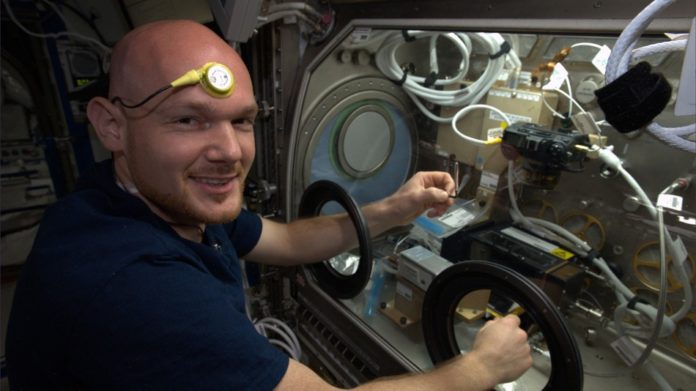Astronauts living on the Space Station are hotter than you

Some strange things happen to your body in space. Your head swells, you lose muscle mass, and your bones may lose density. And now, scientists think that you could also run a fever during a long stay off Earth’s surface.
The Thermolab experiment, designed to monitor the body temperatures of International Space Station astronauts, has found that some people living in space develop a low-grade fever during his or her first two months in orbit, the European Space Agency (ESA) said Thursday. Once back on Earth, however, the astronauts’ temperatures return to normal.
According to the research, astronaut temperatures on the Space Station run almost 2 degrees Fahrenheit, or about 1 degree Celsius, higher than average compared to Earthlings.
The experiment has potential implications for future long-duration space missions, such as a Mars mission, and it could even change the way temperatures are taken on Earth.
Space Station crew members have also complained about feeling hotter on the station than they do on Earth, according to ESA.
“Especially during exercise I would feel hot, afterwards I would always float to a fan to cool down,” ESA astronaut André Kuipers said in a statement.
It’s possible that this feeling of overheating may be due to the fact that convection — a type of heat transfer in which cool air replaces hot air that rises away from you after being heated by your skin — doesn’t happen on the Space Station. Earth-bound people lose body heat through convection, but that doesn’t happen in the weightlessness of the ISS.

Thermolab tech.
Image: Charite, ZWMB
As part of the multiyear experiment, a total of 11 Space Station astronauts took their temperatures using Thermolab, an instrument developed by Hanns-Christian Gunga, of the Center for Space Medicine and Extreme Environments in Germany. The astronauts measured their body temperatures after three months in space and then again right before flying home to Earth.
The kind of sensor used in the Thermolab experiment could potentially change the way doctors measure temperatures on Earth.
At the moment, the most accurate way to get an internal body temperature reading is by using a rectal thermometer, ESA says. However, that kind of tool just wasn’t in the cards for people on the Space Station. Measuring body temperature in such a way is time-consuming, and it would force the astronauts to stop work, according to ESA.
Gunga found a way around the problem.
The Thermolab sensor is non-invasive, and can be read from a distance, making it a great tool for astronauts hard at work in space. It makes use of two sensors — one attached to an astronaut’s head, the other to his or her chest. Mission controllers on the ground are able to monitor the astronauts’ temperatures as they continue working on the ISS.
The new kind of thermometer is already being used during open-heart surgery for children on Earth, and the tool could even be used as a cheaper way to take the temperatures of typical patients, the ESA added. It is not, however, about to replace your ordinary home thermometer.
The new findings could also affect the way that mission managers plan future trips to space. According to ESA, a one-degree rise in body temperature “requires 20% more energy, derived from food.” This change could mean that mission controllers will need to adjust how much food astronauts need for longterm stays on the Space Station or even a future flight to Mars.
Have something to add to this story? Share it in the comments.
